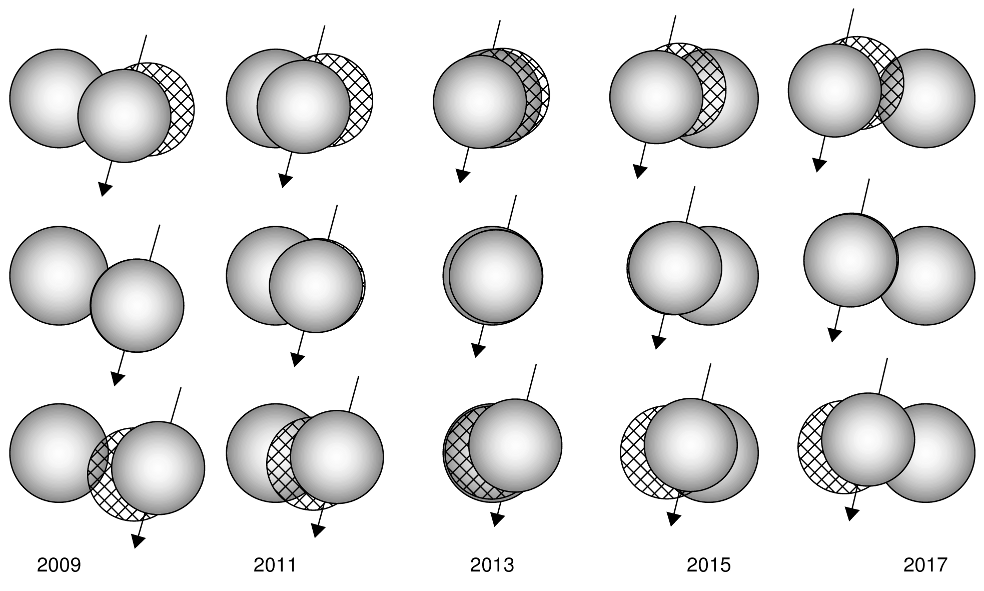
Mutual Events in the Cold Classical Transneptunian Binary System Sila and Nunam
Published in 2012: Icarus 220, 74-83.
W.M. Grundy1, S.D. Benechi2, D.L. Rabinowitz3, S.B. Porter1, L.H. Wasserman1, B.A. Skiff1, K.S. Noll4, A.J. Verbiscer5, M.W. Buie6, S.W. Tourtellotte7, D.C. Stephens8, and H.F. Levison6
(1) Lowell Observatory, Flagstaff AZ 86001.
(2) Carnegie Institution of Washington, Department of Terrestrial Magnetism, Washington DC 20015.
(3) Center for Astronomy and Astrophysics, Yale University, New Haven CT 06520.
(4) NASA Goddard Space Flight Center, Greenbelt MD 20771.
(5) Department of Astronomy, University of Virginia, Charlottesville VA 22904.
(6) Southwest Research Institute, Boulder CO 80302.
(7) Astronomy Department, Yale University, New Haven CT 06520.
(8) Department of Physics and Astronomy, Brigham Young University, Provo UT 84602.
Abstract
Hubble Space Telescope observations between 2001 and 2010 resolved the binary components of the Cold Classical transneptunian object (79360) Sila-Nunam (provisionally designated 1997 CS29). From these observations we have determined the circular, retrograde mutual orbit of Nunam relative to Sila with a period of 12.50995 ± 0.00036 days and a semimajor axis of 2777 ± 19 km. A multi-year season of mutual events, in which the two near-equal brightness bodies alternate in passing in front of one another as seen from Earth, is in progress right now, and on 2011 Feb. 1 UT, one such event was observed from two different telescopes. The mutual event season offers a rich opportunity to learn much more about this barely-resolvable binary system, potentially including component sizes, colors, shapes, and albedo patterns. The low eccentricity of the orbit and a photometric lightcurve that appears to coincide with the orbital period are consistent with a system that is tidally locked and synchronized, like the Pluto-Charon system. The orbital period and semimajor axis imply a system mass of (10.84 ± 0.22) × 1018 kg, which can be combined with a size estimate based on Spitzer and Herschel thermal infrared observations to infer an average bulk density of 0.72 +0.37 -0.23 g cm-3, comparable to the very low bulk densities estimated for small transneptunian binaries of other dynamical classes.

Fig. 3. Schematic views of mutual events as seen from Earth on the instantaneous sky plane, showing how they change over the multi-year mutual event season. North is up and East is to the left. For consistency, all events shown here are inferior events in which Nunam passes in front of (occults) and/or casts a shadow on (eclipses) Sila. Nunam's direction of motion relative to Sila is indicated by arrows. Because the orbit is circular (or nearly so) and the two bodies are the same size (or nearly so), superior events look much the same except that the body in the foreground is Sila instead of Nunam. Nunam's shadow at the distance of Sila is indicated by the hatched region. The middle row shows an event near opposition for each of the years indicated along the bottom. The top row shows events near western quadrature (early in the apparition) and the bottom row shows events near eastern quadrature (late in the apparition).